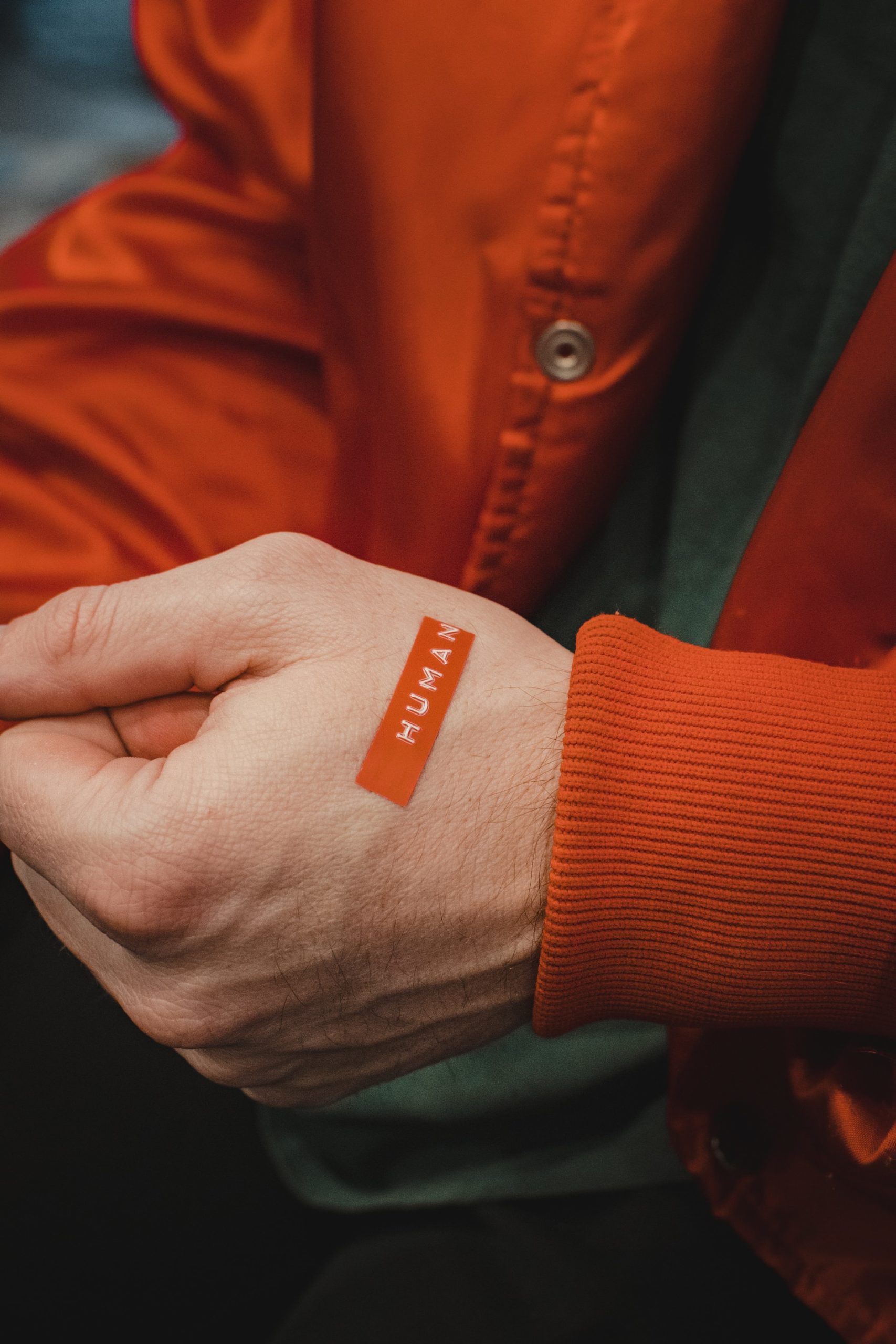Design
5
min read
Human-Centered Design Process: explanation and methodologies


Don't you want to read? Try listening to the article in audio mode 🎧
Is it possible to design an interface, a user experience or a product from the concept of empathy? Is there a framework for Design that allows you to implement a project starting from the needs, behaviors, preferences and desires of the end user, considering the context in which it operates, and the constraints that the latter imposes? The Human-Centered Design Process tries to answer these questions, by proposing a series of specifications and good practices that allow us to understand the needs of consumers from a problem-solving perspective, find useful ideas for creating prototypes and facilitating the transition to the distribution and marketing phases.
Human-Centered Design Process: what is it?
The Human-Centered Design Process, also known as User-Centered Design Process, is an approach to Design that aims to create products and services, trying to understand people's problems, devising solutions that can solve them and evaluating which of these is the most valid. For this reason, Human-Centered Design is also defined as a user first approach, as it puts the user first in all phases of the creative process. Regardless of the nature of the project to be developed, the user is involved from the very beginning through comparisons aimed at finding as many solutions as possible. Once this is done, Designers try to narrow it down, until they identify the most appropriate ways to solve the problem or problems, provided by the reference sample. Promoted by the Nobel Prize for Economic Sciences, Herbert Simon, and developed by the Design School of Stanford University of California, the Human-Centered Design Process includes several phases that are categorized differently, according to the various interpretations. If we want to summarize them, we can however refer to the following stages of progress:- inspiration;
- ideation;
- implementation with prototype;
- final tests
Inspiration
Inspiration is the phase in which field research is carried out. Also, designers address directly to the possible target of a product with the aim of understanding their point of view and in order to create the highest possible level of empathy. The study can be carried out through meetings, by conducting surveys, contacting the sample members by e-mail or through online forms. In some cases, participation can be encouraged by offering discounts and gifts.Ideation
Once we understand the problems that users would like to be solved, we move on to the ideation phase, where all those who participate in the project creation conduct brainstorming sessions, starting from the principle that at least in the initial phase all the insights can potentially lead to a positive result. You create a list of the gathered ideas, and then discuss them and try to improve the most promising ones, on the basis of the indications received during the inspiration phase.Implementation with prototype
From the best idea conceived and improved during ideation phase, you create a prototype and conduct preliminary tests in view of a possible transition to the actual commercial phase. This means that a physical product, a usable service or an interface is created. We refer to something that testers can see first-hand during the trial. In some cases, the prototypes at the table may be more than one. Since the aim of the process is to solve a problem (or problems), the most suitable prototype must be identified for this purpose. Any observation or negative feedback must be taken into consideration for the possible creation of new prototypes.Final tests
The prototype involved in the previous trial is further improved, or redesigned based on the response of the testers, and then it is offered to users, yet again. Despite the commitment and the amount of work required for its realization, Designers must be open to any criticism, because even in this case, emerging defects and malfunctions could negatively impact the user experience. Only when the prototype proves to be effectively capable of solving the problem for which it was conceived, it is possible to move on to the realization of the final product.Why it is important to design for people
The Human-Centered Design Process proves to be a high-performance approach in all situations where the product design aims at creating solutions that are not only useful, but can also involve users’ emotional sphere and the behavior. If a certain format creates dissatisfaction, frustration or discomfort, these conditions are probably due to the fact that Designers have ignored certain problems, or even they did not know about their existence. A participatory approach to design therefore allows to start from the needs of the possible target audience that also wish the product has specific features. The task of creating people-centered solutions lies with the UX Designer, a professional who must also face an adequate training course to excel. In this regard, Talent Garden offers its UX Design Master, the only course in Italy that allows you to become a Junior UX Designer in just 14 weeks. It is organized in collaboration with Sketchin, one of the most renowned design studios in Europe. Its next edition includes 11 weeks of live online lessons, plus the 1st, 4th and 8th week will be in presence in the Milan-Calabiana and Rome-Ostiense Campuses. Participants can choose the city of their interest to attend the course, and the partnership with the Pantheon Design & Technology Institute guarantees the recognition of 24 academic/university formative credits, by attending the Master course.Examples of Human-Centered Design
Spotify
A first example of the Human-Centered Design Process could be the one that led to the creation and improvement of a service like Spotify, probably the best-known platform in the streaming audio sector. In fact, Spotify has solved a problem that affected many digital music listeners: paying to listen to each song. This limitation was answered by proposing two formulas: one free and financed through advertising, and one subscription-based with additional features and no advertising.Colgate Toothbrush
Colgate Toothbrush, one of the most used toothbrushes in the world, is the result of a consultancy of Altitude, a company specializing in the Human Centered Design Process, which was recruited by Colgate-Palmolive with the aim of creating a new model to be launched on the market. All the features of the product are fruit of research work that involved a sample of potential end users, from the peculiar shape reminiscent of an arched neck, to the oscillation of the brush head, from the consistency of the bristles to their arrangement, from the materials chosen for the design up to the corrugated, soft and colored component present in the backside of the toothbrush handle.Fitbit
In the case of Fitbit, a wearable device very common among athletes, the Human Centered Design Process was essential to identify a problem common to all those who exercise continuously or would like to do it more consistently: keeping track of their training sessions and of the results achieved. Fitbit does not only cover the needs of fitness enthusiasts, it is a device suitable for anyone who wants to monitor the moments dedicated to workout, weight, diet, calorie consumption, sleep quality and some essential parameters to check the state of health. All information is accessible via a simple mobile application available to anyone with a smartphone.Conclusions
The Human-Centered Design Process is an approach that solves the problems of consumers by allowing them to participate directly in the design phase of products and services. Thanks to it, it is possible to understand what users want, what their expectations are and how their user experience can be improved by removing the obstacles and defects that would make it tedious, frustrating or unsatisfactory.
Article updated on: 09 August 2023

Don't Waste Your Talent. Turn It Into a Career With a Course That Fits Your Needs!
Talent Garden is your Digital Skills Academy, offering courses in Digital Marketing, UX Design, Digital HR and Data Analysis designed to launch your career.
Keep reading

5
min read
Design Thinking: how to design better services
Design Thinking is a planning model born in the 1960s. It is often linked to architectural design and areas in which ...
Talent Garden
06/05/2019

4
min read
How to become a UI Designer: interview with James Reeve
How to become a UI Designer? Learning from the best. That’s why we interview James Reeve, Creative Director of ...
Talent Garden
06/12/2019

7
min read
How to Conduct Effective In-Site Interviews as a UX Researcher
As a UX researcher, gaining insight into your users' needs and behaviors is crucial for designing effective and ...
Talent Garden
24/02/2023

3
min read
The Evolution of Artificial Intelligence in UX Design
Artificial Intelligence (AI) has recently emerged as a transformative force in various fields, including UX/UI design. ...
Talent Garden
01/09/2023
